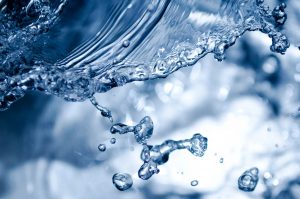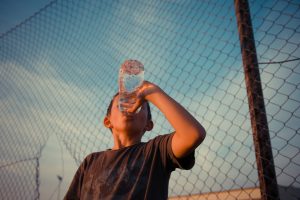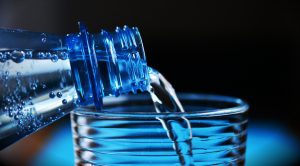Hydration for Young Athletes
 It’s encouraging to see the cultural shift towards ensuring our young athletes have water bottles with them at every practice and game. Parents are filling up water bottles and coaches are now taking time out during practices for the ‘water break’. Is this important? You bet it is.
It’s encouraging to see the cultural shift towards ensuring our young athletes have water bottles with them at every practice and game. Parents are filling up water bottles and coaches are now taking time out during practices for the ‘water break’. Is this important? You bet it is.
The training intensity and competitiveness associated with youth sports has increased substantially over the last several years. Many children and adolescents competing in sports now have weekend-long tournaments and twice-a-day practices. With the focus on improving sport-specific skills, cardiovascular endurance, and muscle strength to optimize athletic performance, the role of proper hydration can often be often overlooked. However, hydration is an extremely important topic for both adult and youth athletes, not only for health and well-being, but for athletic importance as well.
In 2011, the American Academy of Pediatrics (AAP) published the following key hydration recommendations for children and adolescents:
 Consumption of readily accessible fluids at regular intervals before, during, and after activity to offset sweat loss and maintain adequate hydration while avoiding overdrinking. Generally, 100 to 250 mL (3 to 8 oz) every 20 minutes for 9- to 12-year-olds and up to 1 to 1.5 L (34 to 50 oz) per hour for adolescents is enough to minimize sweat-induced body-water deficits during exercise as long as pre-activity hydration status is good. Pre- and post-activity body weight measurements can provide more information for individual rehydration needs. Electrolyte-supplemented beverages that emphasize sodium may be warranted during long-duration (≥1 hour), repeated same-day sessions of strenuous exercise, sports participation, and hot weather.
Consumption of readily accessible fluids at regular intervals before, during, and after activity to offset sweat loss and maintain adequate hydration while avoiding overdrinking. Generally, 100 to 250 mL (3 to 8 oz) every 20 minutes for 9- to 12-year-olds and up to 1 to 1.5 L (34 to 50 oz) per hour for adolescents is enough to minimize sweat-induced body-water deficits during exercise as long as pre-activity hydration status is good. Pre- and post-activity body weight measurements can provide more information for individual rehydration needs. Electrolyte-supplemented beverages that emphasize sodium may be warranted during long-duration (≥1 hour), repeated same-day sessions of strenuous exercise, sports participation, and hot weather.
The effects of fluid loss can have profound deleterious effects.
In adults, loss of 2% of body weight due to dehydration has been shown to have detrimental effects on performance. In children, the negative effects of fluid loss begin to occur at a 1% decrease in body weight. Adverse effects include decreases in cardiovascular system functioning, thermoregulation, and central fatigue. Therefore, it’s critical for young athletes to monitor and maintain adequate fluid balance. Adequate hydration is also essential to optimal athletic performance.
Here are just a couple of examples:
- Mental Performance: the science is clear that decrements can occur in visuomotor (visual perception by the brain), psychomotor and cognitive performance. In other words, not seeing or thinking ‘straight’.
- Physical Performance: a drop in body water levels to below normal can reduce motivation and effort, cardiovascular function, metabolic reactions and thermoregulatory control mechanisms. The effects become more severe in warm climates.
 Symptoms of dehydration include noticeable thirst, irritability, fatigue, weakness, nausea, headache, muscle cramping, dizziness or lightheadedness, dark yellow urine or no desire to urinate, difficulty paying attention, and decreased performance. Treating symptoms of dehydration is crucial in preventing the progression to heat exhaustion. However, children and adolescents may not be aware of these symptoms, or they may be attributed to physical exertion associated with the sport itself. Additionally, young athletes often are excited or distracted during competitions and don’t think to rehydrate during recovery periods. “
Symptoms of dehydration include noticeable thirst, irritability, fatigue, weakness, nausea, headache, muscle cramping, dizziness or lightheadedness, dark yellow urine or no desire to urinate, difficulty paying attention, and decreased performance. Treating symptoms of dehydration is crucial in preventing the progression to heat exhaustion. However, children and adolescents may not be aware of these symptoms, or they may be attributed to physical exertion associated with the sport itself. Additionally, young athletes often are excited or distracted during competitions and don’t think to rehydrate during recovery periods. “
Pre-hydration for Performance
Given the importance of hydration for optimal athletic performance, being properly hydrated before practices and competitions is essential. It’s reported that 50% to 75% of child and adolescent athletes are already dehydrated before beginning sports practice and competition, thereby increasing the risk of further dehydration and its side effects during sport activity.
Sport Drinks
 As a general rule, sports drinks are unnecessary for younger athletes. Because sports drinks often contain high amounts of sugar, children could experience nausea, cramps, and diarrhea when they’re dehydrated. Water for rehydrating, in conjunction with a balanced diet that includes sodium, allows child athletes to function optimally without added sports drinks.
As a general rule, sports drinks are unnecessary for younger athletes. Because sports drinks often contain high amounts of sugar, children could experience nausea, cramps, and diarrhea when they’re dehydrated. Water for rehydrating, in conjunction with a balanced diet that includes sodium, allows child athletes to function optimally without added sports drinks.
Sports drink usage should be restricted for use during hotter weather, same-day multiple sports sessions, older youth athletes who work longer and harder, and in sports situations with few opportunities to refuel with food.
For activities last 60 minutes or less, water is the only substance need for hydration.
The Take Home Message:
- For regular daily life, the adequate intake for youth 10 – 18 years is 2 – 3 liters per day. Drinking fluids represents about 81% of total water intake with 19% of water being provided by foods.
- During exercise, 100 to 250 mL every 20 minutes for 9- to 12-year-olds and up to 1 to 1.5 L per hour for adolescents is adequate.
- The use of sports drinks should be limited and only recommended after strenuous exercise lasting more than 1 hour.
Water really is what makes the ‘world go round’. It provides us the opportunities for physical activity, exercise and life. So, next time you see that water fountain, drink up. And fill that water bottle too!!!
References
- American College of Sports Medicine, Sawka MN, Burke LM, et al. American College of Sports Medicine position stand. Exercise and fluid replacement. Med Sci Sports Exerc. 2007;39(2):377-390.
- Casa DJ, Clarkson PM, Roberts WO. American College of Sports Medicine roundtable on hydration and physical activity: consensus statements. Curr Sports Med Rep. 2005;4(3):115-127.
- National Federation of State High School Associations Sports Medicine Advisory Committee. Position statement and recommendations for hydration to minimize the risk for dehydration and heat illness. http://www.nfhs.org/sports-resource-content/position-statement-and-recommendations-for-hydration-to-minimize-the-risk-for-dehydration-and-heat-illness/. Published November 21, 2014.
- U.S. Soccer Federation. 2006 Youth Soccer Heat & Hydration Guidelines. https://www.usyouthsoccer.org/news/hydration_and_heat_illness_guidelines_from_ussf/
- Nemet D, Eliakim A. Pediatric sports nutrition: an update. Curr Opin Clin Nutr Metab Care. 2009;12(3):304-309.
- Rowland T. Fluid replacement requirements for child athletes. Sports Med. 2011;41(4):279-288.
- Bergeron MF, Laird MD, Marinik EL, Brenner JS, Waller JL. Repeated-bout exercise in the heat in young athletes: physiological strain and perceptual responses. J Appl Physiol (1985). 2009;106(2):476-485.
- Bergeron MF. Youth sports in the heat: recovery and scheduling considerations for tournament play. Sports Med. 2009;39(7):513-522.
- Sexton M. Beat the heat: athletic training prof offers hydration tips. University of South Carolina website. http://www.sc.edu/news/newsarticle.php?nid=4313#.VNfeY010yM8. Updated August 31, 2012.
- Committee on Nutrition and the Council on Sports Medicine and Fitness. Sports drinks and energy drinks for children and adolescents: are they appropriate? Pediatrics. 2011;127(6):1182-1189.
- Cleary MA, Hetzler RK, Wasson D, Wages JJ, Stickley C, Kimura IF. Hydration behaviors before and after an educational and prescribed hydration intervention in adolescent athletes. J Athl Train. 2012;47(3):273-281.
- Council on Sports Medicine and Fitness and Council on School Health, Bergeron MF, Devore C, Rice SG; American Academy of Pediatrics. Policy statement — climatic heat stress and exercising children and adolescents. Pediatrics. 2011;128(3):e741-e747.
